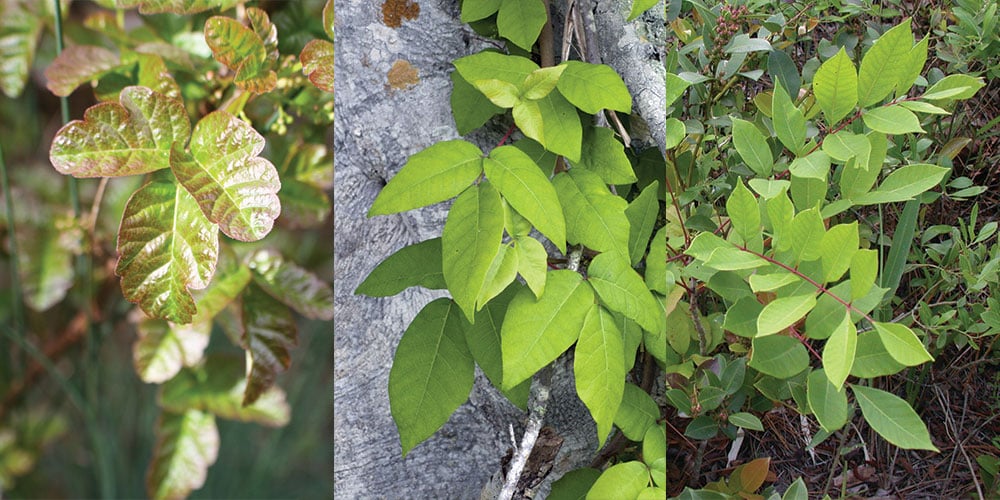Avoid Itchy Rash from These Plants

Did you know that allergies affect over 50 million people in the United States each year? Millions of people are allergic to various things, from dust mites and mold to foods and insect bites. But did you know that certain plants can cause severe itching, rashes and skin infections?
Plants are nature’s beauties. They provide us with oxygen and are lovely to look at. But they can also be dangerous! Some plants can cause allergic reactions in many people, leading to redness, swelling and pain in severe cases. In most cases, the symptoms appear on the wrists or arms and as small bumps that resemble pimples.
In this article we will learn more about the most common plants that cause itching, rashes and other allergic reactions.
Top Three Plants
According to WebMD , poison ivy, poison oak and poison sumac are the most common causes of allergic contact dermatitis in North America. Some people are sensitive to the chemical found in these plants, although the degree of sensitivity varies.
The chemical is called urushiol. Urushiol causes a skin rash in most people who touch it. The oil is found in all parts of these plants—leaves, stems, and roots—at all times of the year. It can even be transferred from one person to another through contaminated clothing, camping equipment, garden tools, and even a pets' fur.
Poison ivy (Toxicodendron radicans)
Poison ivy is a native plant that grows throughout the United States. It is an itchy, rash-causing weed identified by its three leaves and red stem. Poison ivy has a lousy reputation for infesting gardens and parks, but it serves a purpose in the ecosystem. If you contact poison ivy, you may develop a rash on your skin within 24 hours.
To avoid being affected by poison ivy, learn to identify the plant. Poison ivy has three leaflets per leaf with serrated edges. The leaves are pointed at the ends and have different colors depending on the season. In the spring, the leaves can be bright red; in the summer, bright green; and in the fall yellow or orange.
The rash looks different on everyone, but it often starts as tiny, itchy red bumps that turn into blisters within hours or days. The rash is not contagious. However, if you touch unbound urushiol oil and then touch your eyes, you can get a rash near them.
People who are very sensitive to poison ivy may have trouble breathing or swallowing if they touch their face after contact with it. This is called anaphylaxis and can be life-threatening. If you have difficulty breathing or swallowing after coming into contact with poison ivy, you should seek medical attention immediately.
Poison oak (Toxicodendron diversilobum)
This plant grows primarily on the West Coast of the United States. It can be challenging to distinguish poison oak from the many other shrubs and plants around it. So, if you are going hiking or camping—especially in the Western states—it's essential to know what poison oak looks like and how to avoid it.
Poison oak is a vine or shrub with leaves consisting of three leaflets. The leaves change color every season. It is green in the spring with greenish-white flowers and turns yellow-green with white or cream-colored berries in summer. The leaves turn dark red in fall before falling to the ground. In winter the leaves drop off, however you can still get poisoned because the urushiol is still in the vines.
The most common symptom of poison oak is a rash that can form as early as 12 hours after contact. The rash usually persists for weeks if not treated. It can also spread to other body parts by scratching or touching. Some people have an allergic reaction and get more severe symptoms, such as swelling, blisters and difficulty breathing. The poison oak rash may appear as red streaks on the skin, especially where there has been contact with an open wound or blister.
Poison sumac (Toxicodendron vernix)
Poison sumac is one of three sumac plants in the United States. The other two species are staghorn sumac and smooth sumac. While staghorn sumac and smooth sumac have edible berries that you can make tea from, the berries of poison sumac are poisonous. It grows in wet areas such as swamps and along streams in the eastern half of North America.
Poison sumac is a woody shrub or tree that grows up to 30 feet tall. Its main trunk has many lateral branches and the leaves are arranged in pairs on the stems. The leaves are smooth, oblong and oval, usually with 7 to 13 leaflets with pointed tips and rounded bases.
Treatment
The best treatment is prevention. Learn to identify these plants so you can avoid them. If you do come in contact with any of these plants, take the following measures:
- Remove the rash-causing oil as soon as possible.
- Scrub under your fingernails as well.
- Do not spread the oil by touching other parts of your body or scratching the affected area.
- Wash clothing, pet fur, and anything else that may be contaminated with the oil as soon as possible.
You should see a doctor if your rash covers a large area of your body or if you feel sick—especially if you have a fever. Also, see a doctor if your symptoms do not improve after a few days but worsens, or if you develop blisters that ooze pus.
Reminder
I hope we've given you some vital information on what plants to avoid to prevent plant-related allergies. Remember that everyone's skin is different so some people might get more itchy rashes from plants than others.
At the very least, please do your research and be prepared because an allergic reaction can be severe if left untreated.




